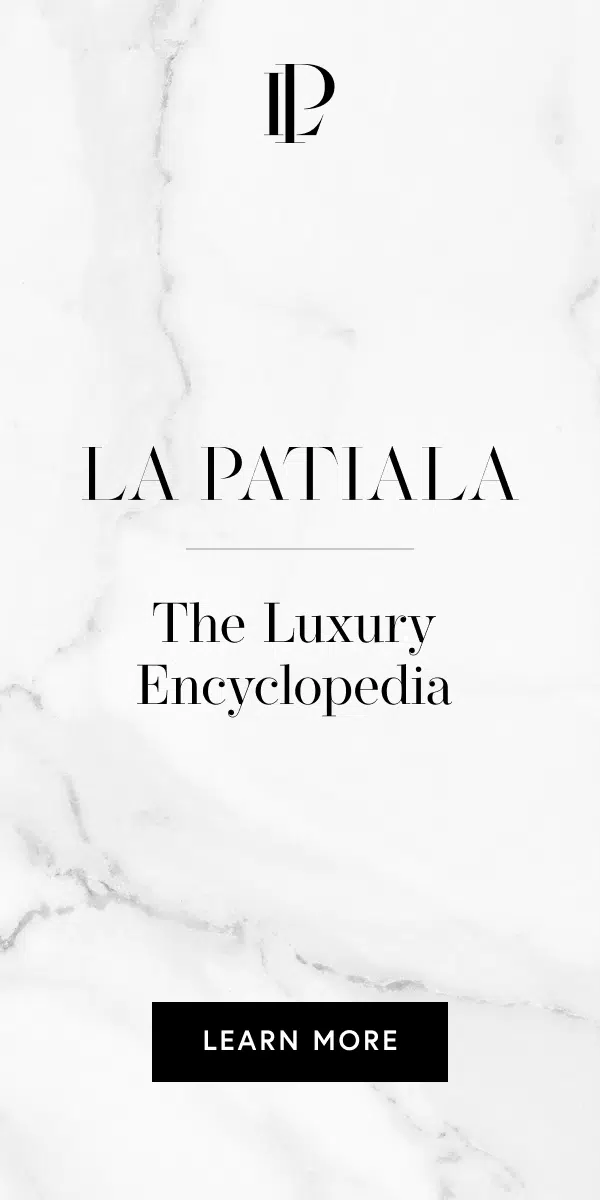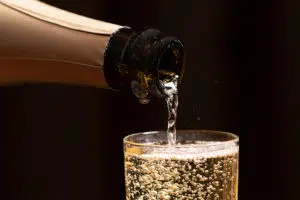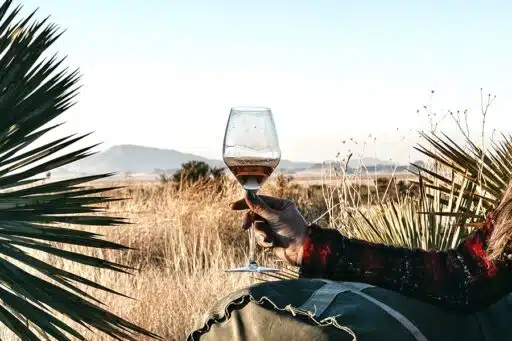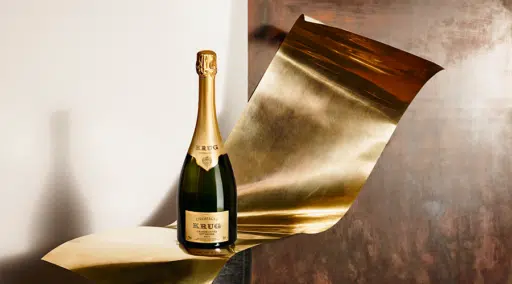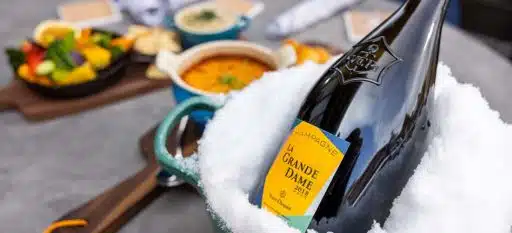The Best Rosé Champagne
Whether you’re looking for a fine vintage rosé Champagne for a special occasion or a wonderful nonvintage bottle, you’ll find it here.
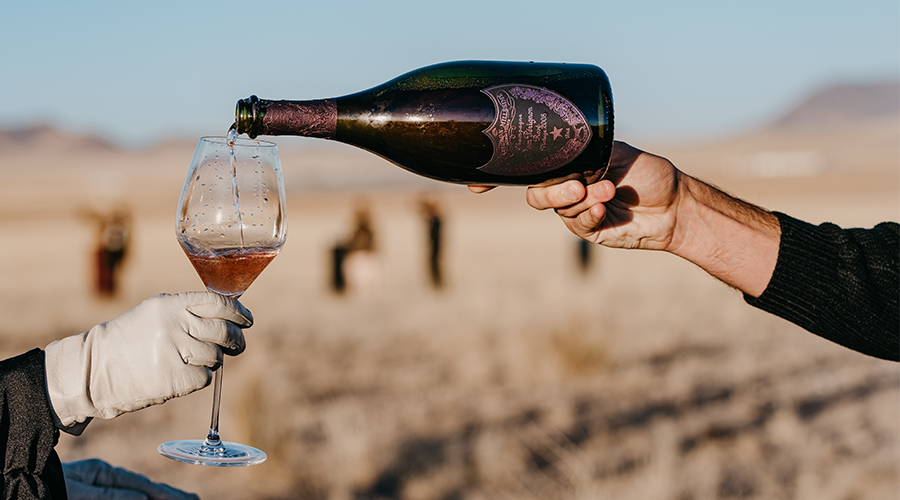
Some people make the mistake of thinking rosé Champagne is a sweet wine and disregard it completely. However, rosé Champagne can be wonderfully complex and delicious, and it is frequently less sweet than its brut counterpart. In addition, many chefs prefer to serve rosé Champagne with food because it pairs so well with many dishes, most notably duck and sushi.
Our selection of the best rosé Champagnes will help you find the perfect bottle. We have options you can open and enjoy right away, as well as the finest vintage Champagnes in the world that can age for many years and develop more complexity in the bottle.
La Patiala Tip:
As always, fine Champagnes are best served between 48° and 54°F. (You can read more about storing and serving Champagne in our guide.) Why? The aromas and flavors will be muted if the Champagne is cooler than that. If you have chilled the bottle in your fridge, take it out about 20 minutes before serving in order to experience the full expression of your Champagne.
The Best Rosé Champagne
Krug Rosé
Current Vintage: Krug Rosé 27ème Édition
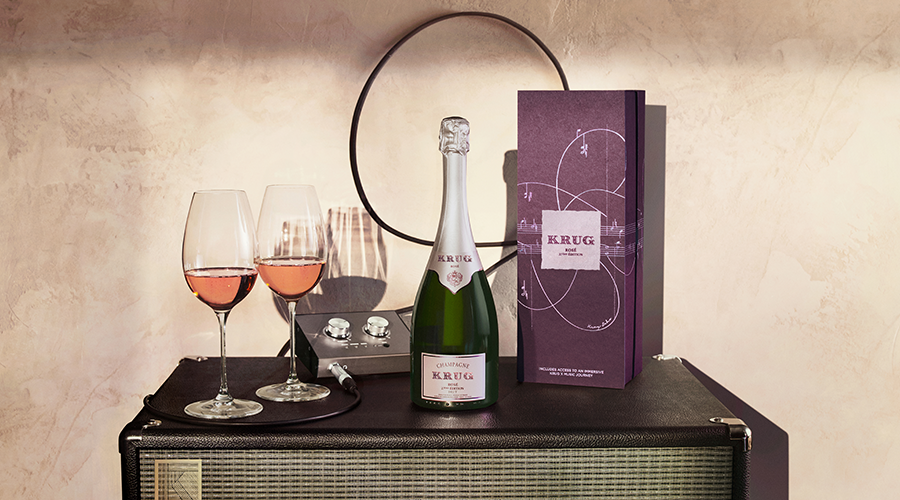
While Krug is an old house that dates to 1843, its rosé is a newer creation. The fifth generation of the Krug family decided to craft a rosé in 1983 using the same approach that the maison takes with its signature Grande Cuvée Champagne. The Grande Cuvée is at the 171st edition, while this latest release is only the 27th rosé.
Krug does not date its Grande Cuvée and Rosé Champagnes by vintage; each is an “édition” composed around one year and features a blend of reserve wines and wines from that year. This way, Krug achieves a richness that wouldn’t be possible in a single vintage.
Krug Rosé 27ème Édition was composed around the 2015 harvest, a year noted for drought and extreme heat during the summer. Cellar Master Julie Caville and the Krug tasting team selected 38 wines from 2005 to 2015 to create Krug Rosé 27ème Édition. Reserve wines account for 55% of the final blend, a higher percentage than in good harvest years. It aged for seven years in the cellar to develop its complexity and elegance.
The Champagne is a blend of 57% Pinot Noir, 23% Chardonnay, and 20% Meunier. It is pink with an orange tinge due to its age and high percentage of red grapes. Rose hips, pepper, grapefruit, and red currant are on the nose, and dried fruit, citrus, and honey shine on the palate. This lends well to savory, not sweet, pairings, such as meat and spiced dishes. While many people think a glass of bubbly is a perfect drink for dessert, only very sweet Champagnes are. We do not recommend this Krug Rosé with sweets.
Dom Pérignon Rosé
Current Vintage: Dom Pérignon Rosé 2009
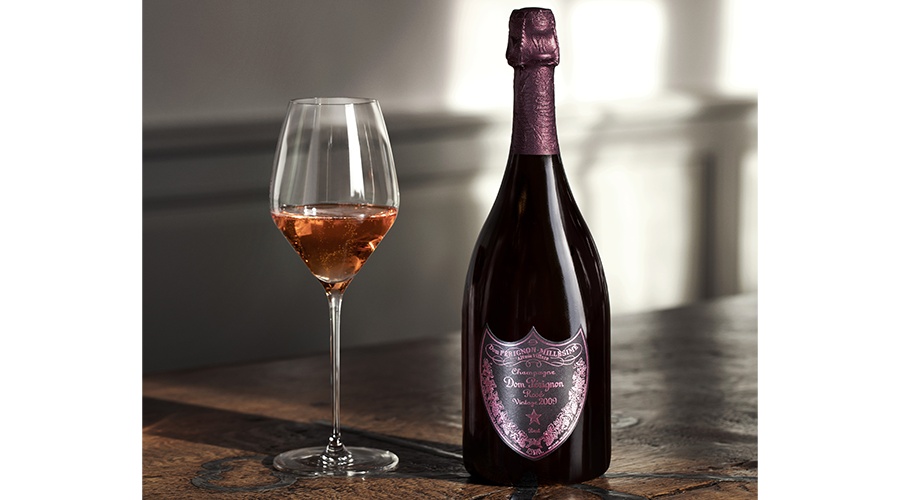
Dom Pérignon is one of the most famous names in Champagne, but many people only think of its brut Champagne. The rosé is produced in smaller quantities, and it’s well worth seeking out. The summer of 2009 had sublime weather. It was warm, dry, and sunny, which led to perfectly ripe grapes, thus creating a rich, fruit-forward wine. Dom Pérignon’s chef de cave took full advantage of this richness to create a bold wine. It is very Pinot Noir-forward, so it has lots of red fruit, including strawberry, raspberry, cherry, and fig, as well as rose and cassis. The Chardonnay adds minerality and balances the fruit. This Champagne aged for 12 years in the cellar, giving it the signature complexity that Dom Pérignon is revered for.
Dom Ruinart Rosé
Current Vintage: Dom Ruinart Rosé 2009
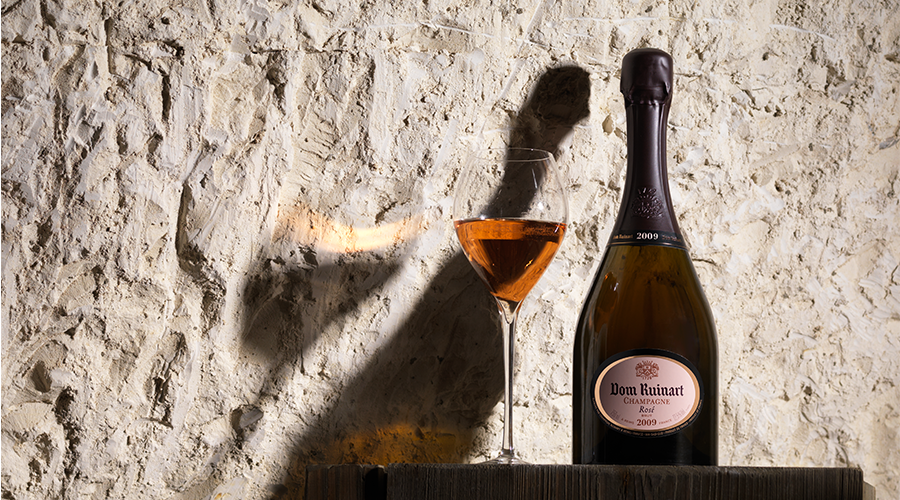
Ruinart is best known for its Blanc de Blancs nonvintage Champagne, which is our recommendation for the best all-around nonvintage bottle, but its vintage Champagnes are not to be overlooked. They come under the Dom Ruinart label, after the monk for whom the house is named.
Dom Ruinart Rosé 2009 exclusively features grapes from Grand Cru vineyards and is a blend of 85% Chardonnay and 15% Pinot Noir. The Champagne aged on the lees for 11 years, which is very long for a rosé Champagne. This long aging time gives it far more complexity than many other vintage Champagnes.
It has a pale pink hue with plenty of spice on the nose, including baking spices like cinnamon, nutmeg, ginger, and florals. The high concentration of Chardonnay adds a minerality. It is quite refreshing, with notes of fresh fruit on the palate. If you’re looking for a more affordable Ruinart, the Ruinart Rosé is lovely but less complex because it hasn’’t aged for as long.
Veuve Clicquot La Grande Dame Rosé
Current Vintage: Veuve Clicquot La Grande Dame Rosé 2012
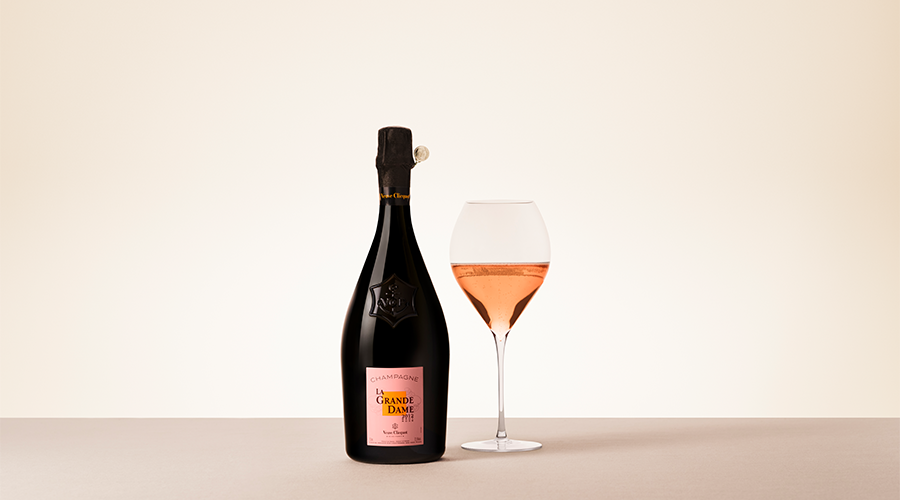
While Veuve Clicquot has produced rosé Champagnes for quite some time, it’s newer to the La Grande Dame collection, which is the maison’s prestige cuvée. The name means “the great lady” in French, in reference to Madame Clicquot, who was known as “La Grande Dame de Champagne.”
Veuve Clicquot has the honor of making the first “rosé d’assemblage” (rosé by blending), created in 1818 when Madame Clicquot blended white wine with red wine. Her blends were always more Pinot Noir heavy, a tradition that Veuve Clicquot continues today. La Grande Dame Rosé 2012 is 90% Pinot Noir. The 2012 vintage is only the ninth edition. It has a deep salmon color, and the nose and palate are a rich blend of florals and spices. The dosage, a mixture of wine and sugar added to nearly all Champagnes, is 8g/liter.
Billecart-Salmon Rosé
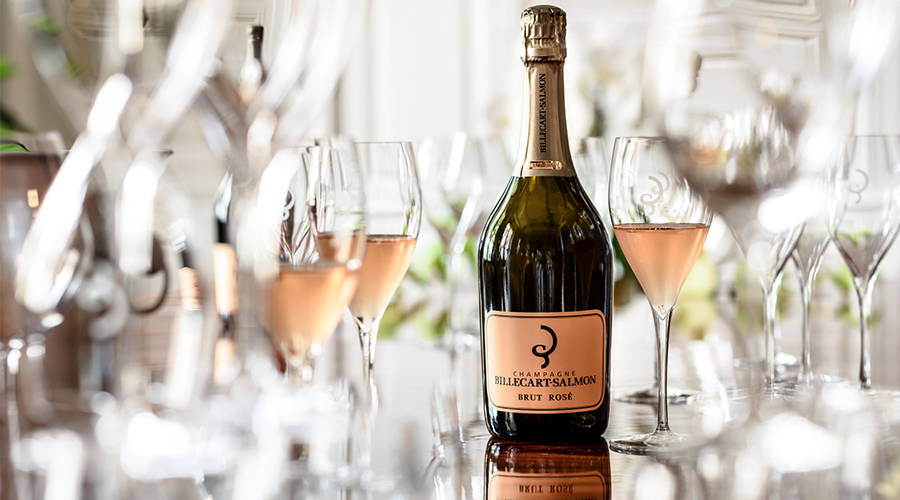
Billecart-Salmon is a rare Champagne house known for its rosé Champagnes. The nonvintage is a perennial favorite and counted among the best rosé Champagne, and for good reason. It ages for three years on the lees, which is three times longer than the minimum requirement in Champagne. It is a blend of 40% Chardonnay, 30% Pinot Noir, and 30% Meunier. It’s slightly sweeter than some vintage Champagnes; its dosage is 9g/liter, which still qualifies as brut, which ranges from 6-12g/liter.
The delicate pink Champagne has a vibrant red berry nose alongside bright citrus, which also appears on the palate. It’s a great pairing for fresh fish, including sushi, and goes well with desserts that have red fruit, such as a raspberry tart.
Laurent-Perrier Cuvée Rosé
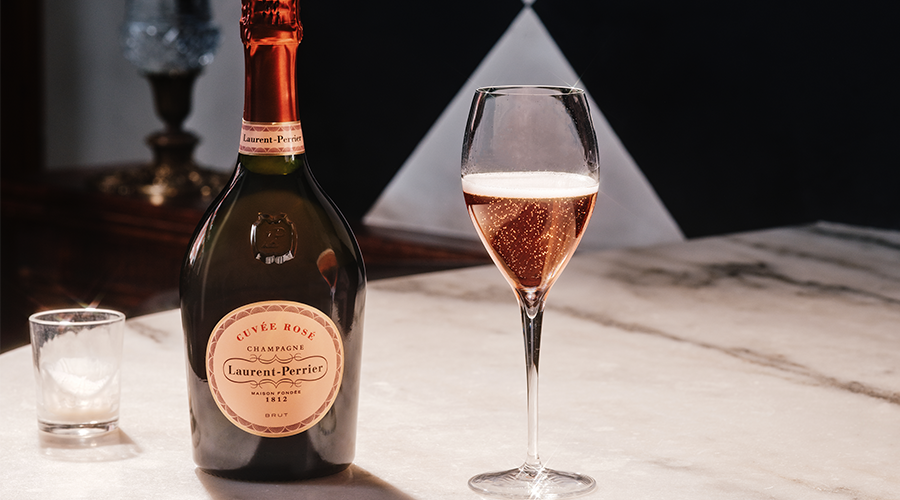
Laurent-Perrier is also noted for its rosé Champagne. This nonvintage Champagne is 100% Pinot Noir, and it is produced using maceration. This is the typical process for making red wine; the grapes are crushed, and the juice rests in contact with the skins in order to extract more color and flavor from them. Most still rosé wines are pressed and strained, so the juice has very little skin contact. When Laurent-Perrier first released its maceration rosé in 1968, it was groundbreaking.
Unsurprisingly, Laurent-Perrier Rosé has a nose and palate full of red fruits, including cherry, strawberry, raspberry, and red currant. The color is deeper than other rosés because it is 100% Pinot Noir and because of the winemaking process. It is more of a deep pink with hints of salmon. Each bottle of Champagne ages for five years before release, which is significant for a nonvintage Champagne.

